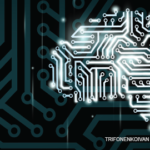The story behind Watson’s development dates back to 1997, when scientists created the chess-playing computer known as Deep Blue, which defeated the then-reigning world champion, Garry Kasparov, in a six-game match. This was an amazing feat: Machine beat man in a game of cognition. Great interest in advancing the technology ensued. However, at the time, there were limits on AI’s ability to create smart computers that could mimic human thought processes. As the story goes, years later, an IBM executive, Charles Lickel, was having dinner at a steakhouse in Poughkeepsie, N.Y., when he noticed that the tables around him had suddenly emptied out. Instead of finishing their sirloins, his fellow diners had rushed to the bar to watch the game show, Jeopardy! This was deep into the winningest contestant’s, Ken Jennings’s, 74-game winning streak, and the crowd around the TV was rapt.
Not long afterward, Mr. Lickel attended a brainstorming session in which participants were asked to come up with IBM’s next challenge, and he suggested that they take on Mr. Jennings.4 This was not an easy task, because human reasoning, learning and inference make up one of the most sophisticated thinking systems in existence. Although computers were capable of providing quick answers to straightforward questions, they were completely flummoxed by some of those being posed to Jeopardy contestants:
“In 1984, his grandson succeeded his daughter to become his country’s prime minister.” A person can quickly grasp that the clue points to the patriarch of a political family and, with luck, summon up, “Who is Nehru?” For a computer, the sentence is a quagmire. Is what’s being sought a name? If so, is it the name of the grandson, the daughter or the prime minister? Or is the question about geography or history?5,6
Nonetheless, Watson dominated the series of matches, handily winning more money than its two opponents combined. Flush with victory, Watson’s career took an interesting turn into medicine. Over the past few years, it was enrolled in an accelerated AI project, working with scientists and clinicians at the Cleveland Clinic in Ohio, Memorial Sloan Kettering Cancer Institute in New York City, the University of Maryland in Baltimore and Baylor College of Medicine in Houston, rapidly acquiring medical knowledge at the incredible clip of up to 60 million pages of text per second, even when that text was in the form of plain old prose, or what scientists call natural language.7

